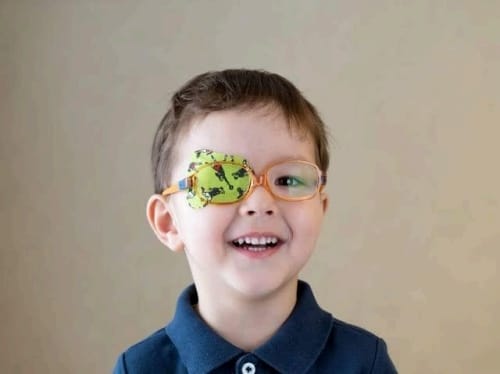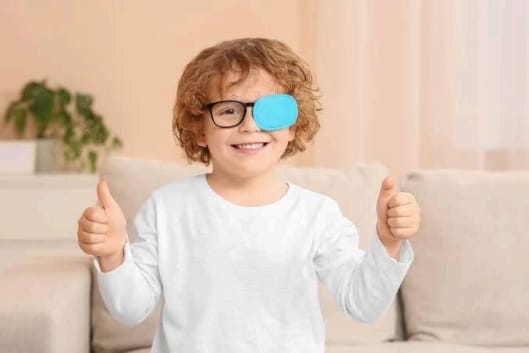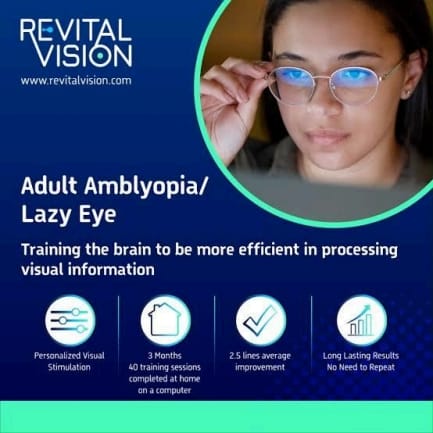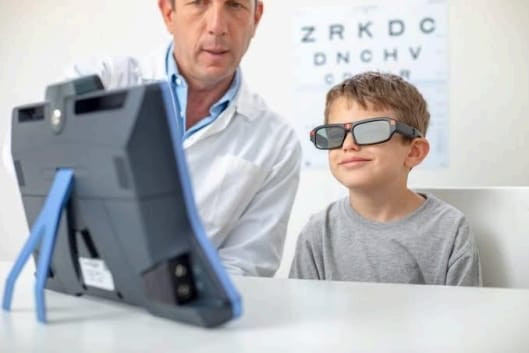Amblyopia
UNDERSTANDING AMBLYOPIA AT TANDON EYE HOSPITAL IN MUMBAI
- Home
- Treatments
- Amblyopia

Amblyopia, commonly referred to as “lazy eye,” is a condition where one eye has reduced vision that is not due to any underlying structural issues. It occurs when the brain and the affected eye are not working together correctly, leading the brain to rely more on the stronger eye. Over time, the weaker eye’s vision deteriorates further if untreated. Amblyopia typically develops in childhood, and if not addressed early, it can lead to permanent vision problems.
Causes of Amblyopia
Amblyopia can develop due to several reasons, including:
- Strabismus (Crossed Eyes): This is the most common cause of amblyopia. When the eyes are misaligned, the brain starts ignoring signals from the weaker or misaligned eye.
- Refractive Errors: Significant differences in vision between the two eyes (due to nearsightedness, farsightedness, or astigmatism) can lead to amblyopia, as the brain prefers the eye with better focus.
- Deprivation Amblyopia: occurs when one eye is deprived of clear vision due to a cataract, droopy eyelid, or other conditions that block vision during infancy or childhood.
Diagnosis of Amblyopia
Amblyopia is diagnosed through a comprehensive eye exam. During this exam, an eye doctor evaluates the visual acuity of each eye individually, looking for differences in clarity between the eyes. Early detection is crucial, as amblyopia is most effectively treated during childhood, while the brain’s visual pathways are still developing.
Treatment Options for Amblyopia
Traditionally, amblyopia has been treated using methods aimed at forcing the brain to use the weaker eye. The most common treatments include:
- Patching: Covering the stronger eye with an eye patch for several hours a day, encouraging the brain to use the weaker eye.
- Atropine Drops: These drops blur vision in the stronger eye, similar to patching, encouraging the weaker eye to work harder.
-
Corrective Lenses: Glasses or contact lenses can help improve vision in the weaker eye, particularly if amblyopia is caused by a significant refractive error.

Revital Vision Therapy for Amblyopia

A groundbreaking development in the treatment of amblyopia in older children and adults is Revital Vision Therapy. This innovative therapy is based on neuroplasticity—the brain’s ability to adapt and reorganize itself by forming new neural connections. Revital Vision Therapy is particularly effective for those who were diagnosed late or whose amblyopia was previously thought to be untreatable.
How Revital Vision Therapy Works:
Revital Vision Therapy is a clinically proven, non-invasive treatment designed to improve vision by training the brain to process visual information more effectively. Unlike traditional methods that focus solely on strengthening the eye, Revital Vision targets the brain’s visual cortex, where images are processed and interpreted. This method is particularly helpful in improving contrast sensitivity and fine detail perception in the affected eye.
Program Features:
- Custom Training Sessions: The program is delivered through personalized computer-based exercises that patients perform at home. Each session lasts about 30 minutes, and the complete program typically requires 30-40 sessions.
- Improved Visual Acuity: Clinical studies have shown that Revital Vision Therapy can improve visual acuity by two or more lines on a standard eye chart, significantly enhancing the quality of life for patients.
-
FDA-Approved: Revital Vision is an FDA-approved therapy, proven effective for individuals over the age of nine, which is traditionally considered beyond the critical period for amblyopia treatment.

Benefits of Revital Vision Therapy:
- Non-Invasive: No surgery or physical discomfort.
- Permanent Improvements: The visual gains achieved through therapy are maintained over time, even after treatment ends.
- Suitable for Adults: Revital Vision is one of the few therapies that can successfully treat amblyopia in older patients and adults, giving hope to those who thought their condition was untreatable.
At Tandon Eye Hospital, we are proud to offer cutting-edge treatments for amblyopia, including Revital Vision Therapy. If you or a loved one has been diagnosed with amblyopia, reach out to our experienced team to learn more about the best treatment options for restoring clear and healthy vision.
FAQ
Frequently Ask Questions.
Learn more about eye operation, treatment, and best eye surgery in Mumbai, India.
While treatment is most effective in children, recent studies suggest that older teens and adults can also benefit from therapies like patching or vision exercises, though improvements may be more limited.
One such therapy is RevitalVision, an FDA-cleared, non-invasive program designed to enhance visual processing in individuals aged 9 and above with amblyopia.
Clinical studies have demonstrated that adults undergoing RevitalVision therapy can achieve significant vision improvements, with many patients experiencing a 2.5-line advancement on the eye chart and a 100% increase in contrast sensitivity.
The duration of amblyopia treatment varies based on factors such as the patient’s age, severity of the condition, and adherence to the prescribed therapy. Generally, significant improvements in vision can be observed within weeks to months of initiating treatment. For most children, treatment may last from six months to two years.
Regular follow-up with an eye care professional is essential to monitor progress and adjust the treatment plan as needed. Adherence to the prescribed therapy, whether it involves corrective eyewear, patching, or vision exercises, plays a crucial role in the effectiveness and duration of treatment.
If not treated, amblyopia can lead to permanent vision loss in the affected eye and may impair depth perception and binocular vision.
Regular eye examinations in early childhood are essential for early detection and treatment of amblyopia. The American Optometric Association recommends comprehensive eye exams at 6 months and 3 years of age.

